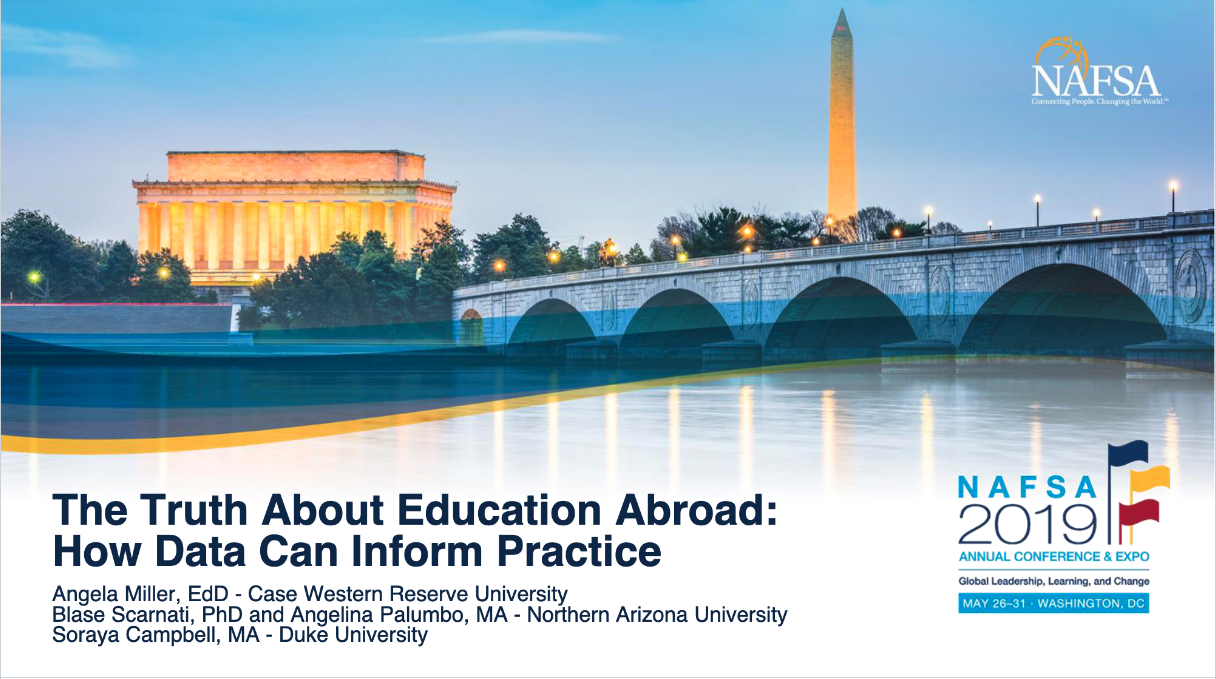During NAFSA’s Annual Conference in 2019, several colleagues and I presented on the use of data to inform best practices in international education. My role was to illustrate the different ways data can inform education abroad practices. I’ve listed some examples below:
- Strategic Planning (e.g. show your institution internationalization will help them achieve its strategic goals by illustrating with the data)
- Conduct GAP analysis in programming
- Increase enrollment in education abroad with marketing insights
- Improve quality of programs (e.g. program reviews, surveys/assessments, both qualitative and quantitative)
- Improve workflows, practices and policies (e.g. advocating for more positions in your office)
- Measure impact of education abroad
You can find a copy of the presentation here:
There are a myriad of ways data can be used to effectively manage education abroad opportunities. There are also some promising avenues that haven’t been fully explored yet including machine learning and social network analysis, especially in the realm of understanding the profile of student who is engaging in these types of opportunities and why certain groups may initially be interested but then drop out. These research questions can benefit from further analysis with these techniques.
